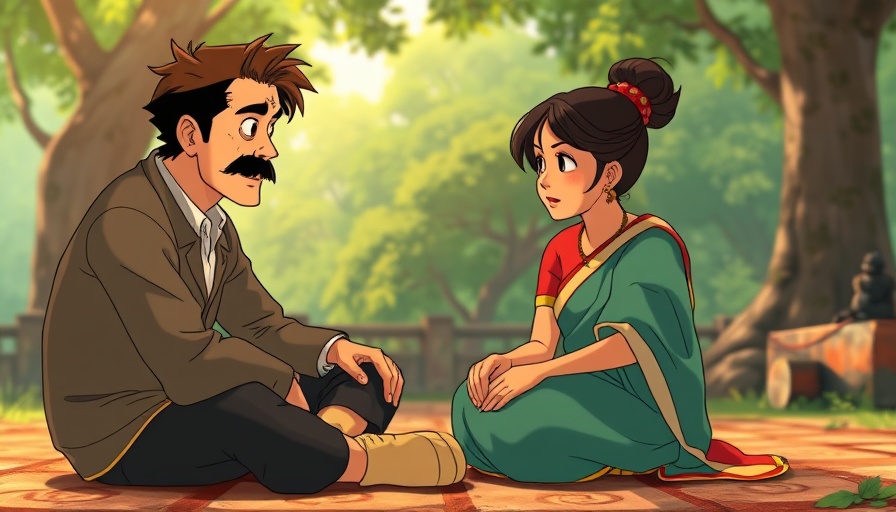
The Rise of AI in Creative Arts
The transformation of ordinary photographs into stylized art has taken the digital world by storm, especially through the lens of AI technology. One of the most popular trends involves changing photos into the enchanting Ghibli animation style, reminiscent of classics like 'Spirited Away' and 'My Neighbor Totoro'. This transformation resonates with fans of Studio Ghibli, combining nostalgia with the allure of technological innovation. However, as evidenced by a recent incident during Chhath Pooja, this trend isn't without its quirks.
When AI Goes Awry: The Chhath Pooja Incident
In a striking example, a user’s attempt to convert a lovely Chhath Pooja photo into Ghibli art revealed a major flaw in AI's processing capabilities. Instead of producing a whimsical, heartwarming illustration, the output displayed a bizarre error that swapped a coconut—a traditional symbol in the celebration—for a human head. While the intention was to capture the festivity in a playful manner, the result not only startled the user but also sparked discussions regarding the reliability of AI-generated content.
Understanding AI's Personality Flaws
Such quirky outputs from AI tools, like the one powered by OpenAI, underline the machine’s limitations in understanding cultural nuances and artistic intentions. Although AI can mimic styles and generate visually stunning art, the underlying algorithms still lack an intuitive grasp of context and meaning. This inconsistency raises essential questions about the balance between artistic expression and technological shortcuts.
Cultural Significance: The Intersection of Tradition and Technology
The Chhath Pooja celebration is an ancient festival deeply rooted in Indian culture, dedicated to honoring the Sun God and thanking him for sustaining life. When AI mishandles a culturally significant image, it can inadvertently minimize the richness and depth of those traditions. As AI continues to be integrated into art and digital media, understanding and respecting the cultural significance behind the visuals it generates will be crucial. How can the algorithms be improved to better represent such significant themes without veering into the bizarre?
Future Implications and Predictions for AI in Art
As AI technologies evolve, the future of digital art could witness a significant shift. Tool developers must prioritize integrating cultural sensitivity and contextual awareness into their systems. Predictions suggest that with advancements in neural networks and machine learning, AI may soon be able to produce art that is not only aesthetically pleasing but also culturally context-aware. Could this be the leap forward that creatives are seeking, or will the mistakes remain a point of contention?
What Does This Mean for Consumers and Creatives?
For consumers eager to explore AI art, the Chhath Pooja incident serves as a cautionary tale. Before diving into AI-generated imagery, it’s important to recognize the imperfections that can surface and the need for human review. For artists and creatives, these tools should be viewed as supplementary rather than replacements, facilitating creativity while still requiring a human touch for cultural accuracy and emotional depth.
In Conclusion: Embracing AI with Caution
The fascination with AI generated art, particularly in the style of beloved animation studios, showcases the excitement surrounding the fusion of technology with creativity. However, the spooky outcomes like the one shared above highlight the ongoing imperfections within AI's grasp of culture and context. As we move forward, both creators and consumers should engage with AI thoughtfully, striving for a balance that honors artistic authenticity while embracing innovative exploration. What are your experiences with AI in art? Consider sharing your stories and insights today!
 Add Row
Add Row  Add
Add 




 Add Row
Add Row  Add
Add 

Write A Comment